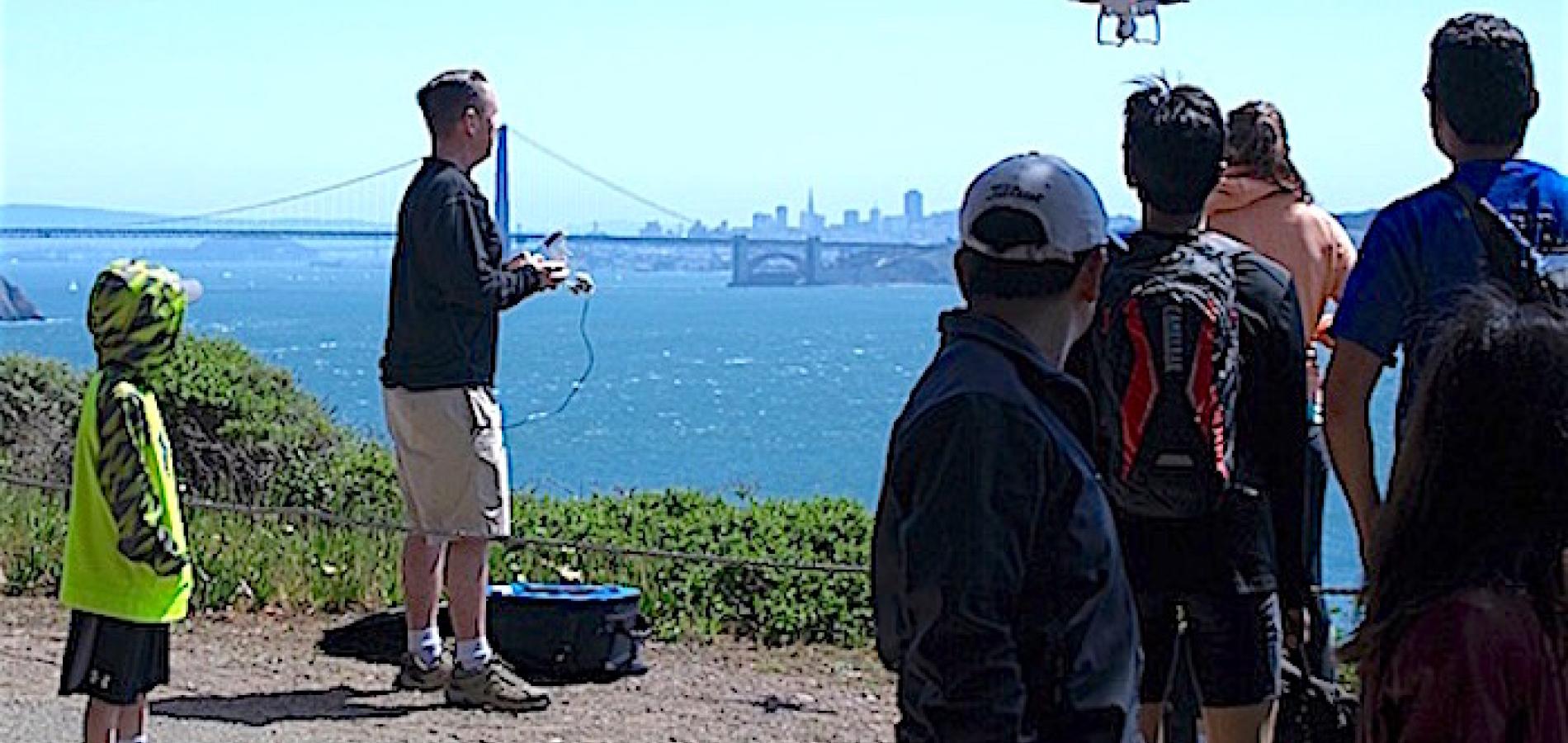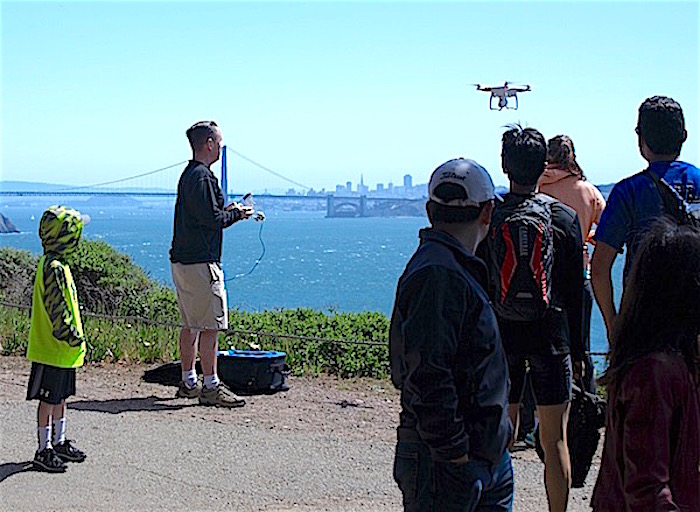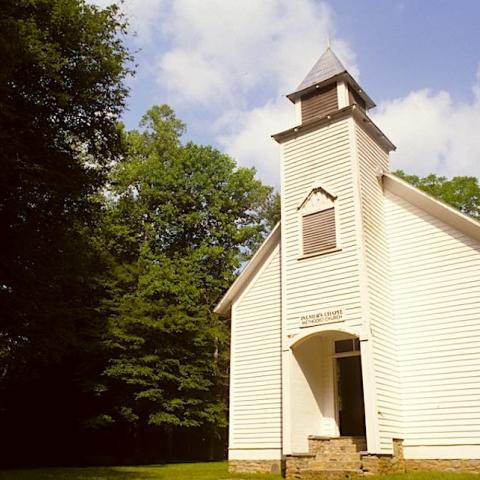How should we act in a national park? That might seem to carry an obvious answer, but it's not always so obvious these days.
As different generations, different racial groups, and different cultures enter the National Park System, not everyone seems to be there to enjoy the natural beauty on display in the landscape parks, content merely to walk about, gaze at the setting, hike or backpack, paddle or climb, or watch wildlife.
The parks are backdrops for enjoyment, that's for sure, but some visitors don't understand that barriers are there to preserve the landscapes and protect visitors...sometimes from each other.
"We have 15 miles of paved trail in Zion Canyon itself, and we're tracking 30 miles of social trails that we're trying to rehab," Zion National Park Superintendent Jeff Bradybaugh said recently. "But people keep tromping on them."
"Anywhere where people may park ... they make beelines to things they want to see, as opposed to taking a developed trail," he continued, while discussing both crowding in his park and the behavior of some visitors. "And, of course, we have the usual things, switchbacks; just the sheer volume of people. It's outstripping our ability to cope with it. Graffiti, and lots more graffiti than we’ve ever seen before, and just a different behavior in our visitors."
"It just may be the sheer volume, but more vandalism, I think kind of a lack of understanding what the park experience is about. For example, hauling 'boom boxes' well up into the (Zion) Narrows for a dance party. And so part of it is obviously we need to educate the visitors, but we’re beyond capacity, I think it’s safe to say.”
"We’re just seeing a different understanding of what the park is about. How to visit. I think some of that is education. We’re kind of overwhelmed.” -- Jeff Bradybaugh, Zion National Park Superintendent
More than a year ago a woman from New York City envisioned the Western parks as palettes, and used acrylic paints to brush images onto boulders and cliff walls in parks such as Zion, Crater Lake National Park, Rocky Mountain National Park, Yosemite National Park, Death Valley National Park, Joshua Tree National Park, Colorado National Monument, and Canyonlands National Park. Her nom de plume was "Creepytings." (Traveler note: There still has been no resolution of this case.)
Grafitti has been a problem at Great Smoky Mountains National Park in North Carolina and Tennessee, and at Jockey Hollow in Morristown National Historical Park in New Jersey, as well as at Gateway National Recreation Area in the New York-New Jersey metropolitan area.
Other issues, which may be "not entirely appropriate behavior" in the parks, include mass Rim-to-Rim hiking groups at Grand Canyon National Park. And then there was the case of an editor for Road & Track magazine who took advantage of the park system's closure in October 2013 to ride a 250cc dirt bike through Great Smoky Mountains National Park, and later wrote an article boasting about it.
And then there's the drone problem. While the National Park Service long ago banned drone launches or landings in the parks, people continue to ignore it. Just last week a drone operator was cited for flying his craft too close to the Washington Monument. That marked the 10th time this year alone that a drone operator was cited in the National Capital Region.
People may also arrive in the parks with Instagrams on their minds, and not for a healthly retreat into nature.
Back in October 2014 Trevor M. Lee pleaded guilty in connection with nine counts, ranging from camping outside of designated areas to lighting a campfire when fires were banned due to high fire danger, according to court documents. The man also boasted of climbing a giant sequoia tree in Yosemite National Park's Tuolumne Grove (an illegal activity) at a time when the grove was closed to the public due to the Rim Fire.
His mission? Apparently to snap photos of his behavior and post it to his Instagram account. Along one of the images he wrote, "We didn't just hike to the top of Half Dome during the gov't shutdown, we camped on top of it too!"
Half Dome and the Sub-Dome area are closed to camping, whether the parks are closed or open for business.
The case against Mr. Lee arose in December 2013, when a park ranger learned of Mr. Lee's Instagram feed via an article that explored his behavior in Yosemite.
"The site described and displayed LEE engaged in numerous activities prohibited or restricted in Yosemite National Park. The article was prominently displayed on the website and had over 400,000 'likes' from other users of the lnstagram site," the investigator's report noted.
In the end, Mr. Lee reached an agreement with the government that allowed him to plead guilty to five of the counts and pay a $1,500 fine spread over 11 months.
The issue of parks being used as Instagram backdrops was visited recently by New York Magazine, which ran a story about "The flood of 'Instagram hikers' — the sorts of people who see a pretty photo on Instagram and want to go take their own picture in that spot — isn’t just inconvenient, it’s potentially damaging. And, as people who regard bears as a lot more than funny opportunities for selfies will tell you, dangerous, too."
Don't think so?
“In Yellowstone, about a month ago, there was a grizzly bear feeding on an elk carcass. And a guy went almost right up to this grizzly bear to take a picture. And so literally they had to station a park ranger 100 yards away from this grizzly bear as long as it was there, which was for several days, to keep people [away], because otherwise people would keep going up to a GRIZZLY BEAR that's in the wild eating an animal, to take a picture. I mean, they're going with kids and things like that!" National Park Service spokeswoman Kathy Kupper told the writer.
To be sure, the National Park Service understands the Instagram craze, and is busy feeding dozens if not hundreds of Instagram channels itself. But as the agency strives to attract new visitors, there are new generations with different ideas of how to appreciate the outdoors. For instance, Baby Boomers may wander from what is appropriate behavior, and new visitor's behavior will continue to evolve.
“I think one of the things that will be interesting to see in the next century of service is, as we talk about Find Your Park, I think what we consider to be traditional park experiences I’m thinking are going to transform," said Great Smoky Mountains National Park Superintendent Cassius Cash. "Our concern is to make sure that people connect with the natural world, and I think once people get out to do just that, what’s going to be interesting is to see how they enjoy it once they get out there."
“We had an interesting conversation with staff, because a lot of trails are crowded with folks and you hear a lot of people and you see a lot of people, and one of the staff members said, 'Well, that’s not a good park experience.' And I threw a, 'Why do you say that?' And he said, 'Because it’s not quiet and it's not solitude.' And I said it depends on what you define as peaceful and solitude, not hearing horns being blown, or helicopters or airplanes," the superintendent recounted. "It’s all relative, and so I think we have to give the next generation of users and supporters space for them to define what is the park experience for them, because I think it’s going to change. And I think like anything else we have to change with it."






 Support Essential Coverage of Essential Places
Support Essential Coverage of Essential Places







Comments
This article is so disheartening but not surpising to me considering how our societies ethics have changed. My family and I have visited most of the National Parks for years and cherish them. I think you are going to have to start making it known you will prosceute anyone that has defaced the park, hurt an animal or disturbed the park in anyway. Parents must be made aware they are responsible for their children. Everyone should have stern warnings and must see a video before being alowed to enter the parks, maybe this will curtail the rudness and vandilism.
I keep hearing all of this business about the new generation--and how people change. The point is that they haven't changed. A century ago, the national parks were filled with theatrics, from Yosemite's firefall to the flood-lighting of Old Faithful Geyser off the roof of Old Faithful Inn. And let us not forget the infamous bear-feeding shows, variously held at Yosemite, Yellowstone, and Sequoia national parks. Yosemite's Indian Field Days is another infamous example of beating the bushes for more visitors, as is the Ahwahnee Hotel's Bracebridge Dinner, choreographed by no less than Ansel Adams.
People just can't say no, but we eventually said no to most of it in the interest of wilderness parks. How should we say no today? We certainly shouldn't begin by giving in to the fashionable notion that certain races and cultures have different "behaviors." All they really have is different technologies. When it comes to acting like jerks, every generation is equal.
When the twentieth-century Park Service did not draw the line on automobiles, it invited all of the destructive behaviors we see today. As did American society at large. A drone? A dozen cans of spray paint? Just throw them in your trunk. The moment you have to think about it, the problem begins to take care of itself.
All we need to fix the problem is to make people stop and think. Unfortunately, the Park Service rarely wants to do that anymore, as it finally began doing in the 1920s. The naturalists were the key--educating the public at every turn. As a naturalist in Yosemite, I was controversial. Why? Because I dared tell the public no. I said it gently, and said it historically, pointing out what the parks were meant to be. But that didn't stop the concessionaire from wanting me fired for daring to spoil the public's fun.
The forces here are not race, class, and gender. They are rather an unwillingness to say no. "It's all relative," the superintendent says above. Nonsense. Preservation is never relative. You either do it or you don't. You either believe in it or you don't. The minute you say it is relative, yes, there will be helicopters overhead.
Who profits from that? Not preservation. How do you say no? Indeed, you educate. Then where are the educators? Where are the naturalists, historians, and ecologists commensurate with the need?
Dwindling still, even in this centennial year. And now you know why drones and spray paint will continue to plague the parks.
It is a never -ending problem...to teach people to respect and cherish the natural beauty of our National Parks. It saddens me so much to hear of these people that just don't know how to behave. I am a stong believer in starting with responsible parenting...all 3 of my boys have a great appreciation and respect for nature. Probably the kind of people that "misbehave" in the parks, are also doing other inconsiderate things in other aspects of their life. As they say: "There's at least one in every crowd."
This article is exactly what I've been trying to say recently. It appears that the NPS is missing huge opportunities to educate visitors through the media of interpretive activities. The message of protecting our parks can easily be woven into virtually any interpretive presentation without bashing visitors over the head. (Although some really need it.)
It could be anything from a short explanation of the Enabling Act's built-in contradictions to a plea for help from visitors. I used to make a point of picking up some trash along the trail any time I led a guided walk. I'd point out to people that my left rear pants pocket is my portable litter bag. I really believe it had some effect and may have helped at least a few visitors find that one of their pockets could do the same thing.
Sure, there are an unfortunately large number of people who are hopeless dunces, but I do believe the majority of park visitors are more intelligent than that.
All we have to do is wake them up.
Hear, hear! Very well said. Say it again.
As a frequent NPS visitor and camper, I am appalled by how others behave and treat our national treasures. As a city-dweller, I depend on the parks to restore my mind and soul with regular trips to parks and forests near me. The rudeness of neighbors in the campgrounds is astounding! Playing loud music at any time of day in a campground or park takes away the peace and serenity I seek by connecting with nature. It has driven me to seek more remote places away from people and camping far from the inconsiderate masses. Even when I am fortunate enough to locate a remote place for camping, often the place is littered with trash left by the people before me. I believe that alcohol often plays a role in this reckless disregard for the beauty of nature and I'm glad some parks are prohibiting alcohol completely.
it saddens me deeply to see how others behave in these wonderful places and I fear that a time will come when I won't have any place to escape the noise and congestion of the city
I couldnt agree more with the education is a great step forward. somone will need to educate the educaters how to educate the new visitiors. Handing them a flyer at the gate is good but is way to late to create a park culture and respect for nature. an Idea for something that could be done in the now is to educate with well thoughtout signage for miles along the way to park entrances. This could do a lot.
Its not a matter of inteligence its a lack of personal responsibility. Our society has move away from personal responsibility, family values, and respect for the law. This is what you get. This is when your "entitilement mentality" would have been an appropriate accusation.